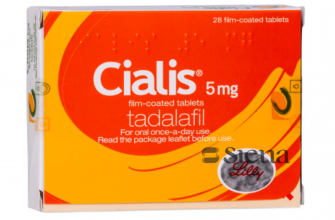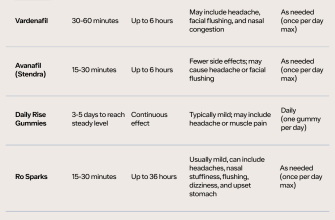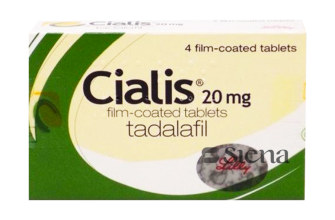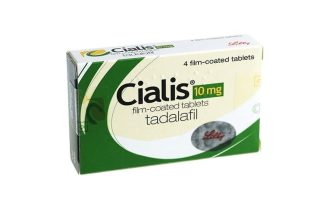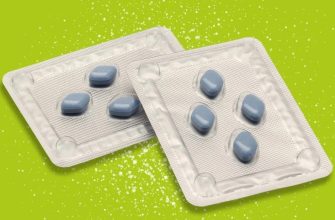Don’t split your Cialis tablets without consulting your doctor. While some medications can be safely halved, Cialis requires careful consideration due to its unique formulation and potential for uneven drug distribution. Ignoring this advice could lead to inconsistent dosing and reduced effectiveness.
Your physician can assess your individual health needs and determine if splitting your Cialis is appropriate for you. They’ll factor in your specific condition, current medications, and overall health. This personalized approach is far superior to relying on general advice found online. Remember, always prioritize a conversation with your doctor before altering your prescribed dosage.
If your doctor approves splitting, ensure you use a reliable pill splitter to maintain accuracy. Improperly splitting the tablet can result in inaccurate dosing. Furthermore, store your Cialis tablets according to the instructions on the label to maintain their potency and effectiveness.
Always prioritize your health and safety. This guide provides information, but it’s not a replacement for professional medical advice. Talk to your doctor.
- Splitting Cialis: A Comprehensive Guide
- Understanding Cialis Dosage Forms
- Proper Splitting Techniques
- Potential Risks and Considerations
- Alternatives to Splitting
- Storage and Handling
- Understanding Cialis Dosage and its Effectiveness
- The Risks and Potential Side Effects of Splitting Cialis
- How to Safely Split Cialis Tablets (If Necessary)
- Using a Pill Splitter
- Storing Split Tablets
- Important Considerations
- Alternative Options
- Alternatives to Splitting Cialis: Exploring Other Treatment Options
- Consulting Your Doctor Before Splitting Cialis: The Importance of Medical Advice
- Why Consult Your Doctor?
- What to Discuss with Your Doctor
Splitting Cialis: A Comprehensive Guide
Always consult your doctor before splitting Cialis. Improper splitting can affect absorption and dosage accuracy.
Understanding Cialis Dosage Forms
Cialis is available in various strengths (5mg, 10mg, 20mg). Your doctor prescribes the appropriate strength based on your individual needs. Splitting a higher-strength tablet allows for cost savings if your doctor approves a lower daily dose.
Proper Splitting Techniques
Use a pill cutter specifically designed for accurately dividing tablets. Place the tablet firmly in the cutter and apply even pressure. Avoid crushing the tablet, as this may alter its properties. Store the halves separately in airtight containers, away from moisture and light.
Potential Risks and Considerations
Inconsistent tablet halves might lead to variable drug absorption. This could result in unpredictable effectiveness. The risk of inconsistent dosing is higher with some brands compared to others. Always use a reliable pill cutter and ensure even halves. Never attempt to split extended-release formulations of Cialis.
Alternatives to Splitting
Discuss alternative options with your physician if splitting Cialis proves difficult or unreliable. They may prescribe a lower-strength tablet eliminating the need to split.
Storage and Handling
Store both whole and halved tablets according to the manufacturer’s instructions. Improper storage can degrade the medication’s efficacy. Discard any damaged or discolored tablets.
Understanding Cialis Dosage and its Effectiveness
Cialis comes in various dosages, typically 2.5mg, 5mg, 10mg, and 20mg. The best dosage depends on individual factors and should always be determined by a doctor.
Generally, doctors prescribe a starting dose of 10mg to be taken as needed, at least 30 minutes before sexual activity. This is a common starting point. However, if 10mg proves insufficient, your doctor might increase the dosage to 20mg. Conversely, if side effects are significant, the dose may be reduced to 5mg or 2.5mg.
- Daily Use: For daily use, lower doses (2.5mg or 5mg) are common. This allows for spontaneity without needing to time it around sexual activity.
- As Needed: Higher doses (10mg or 20mg) are typically used as needed. Remember that this is only taken when sexual activity is anticipated.
Factors influencing dosage include:
- Age: Older men may require a lower dose.
- Liver and Kidney Function: These organs process Cialis; impaired function necessitates dosage adjustments.
- Other Medications: Interactions with other medications can necessitate dosage changes. Always inform your doctor of all medications you take.
- Individual Response: Some men respond well to lower doses, while others require higher doses to achieve desired results.
Remember: Never adjust your dosage without consulting your doctor. Incorrect dosage can lead to reduced efficacy or increased side effects. Open communication with your doctor is crucial for optimal results and minimizing potential risks.
Cialis’s duration of action varies depending on the dose and individual factors. The effects can last for several hours, even up to 36 hours for some individuals.
- Always consult your doctor before taking Cialis or any medication.
- Follow your doctor’s prescribed dosage and instructions carefully.
- Report any side effects to your doctor immediately.
The Risks and Potential Side Effects of Splitting Cialis
Avoid splitting Cialis tablets unless explicitly instructed by your doctor. Improper splitting can lead to inconsistent dosing, potentially reducing efficacy or increasing the risk of side effects.
Uneven tablet division may result in you taking too much or too little of the active ingredient, tadalafil. Taking too much increases the likelihood of experiencing side effects.
Common side effects of Cialis include headaches, muscle aches, back pain, nasal congestion, flushing, and indigestion. These side effects are usually mild and transient, but increased dosage through improper splitting can intensify them. Rare but serious side effects, such as sudden vision loss or hearing loss, require immediate medical attention. The probability of encountering these rare side effects may be amplified with inaccurate dosage.
Furthermore, splitting tablets can compromise the medication’s integrity, potentially affecting its stability and absorption. This can lead to unpredictable results and reduced therapeutic benefit.
Always discuss any concerns about cost or dosage with your physician before attempting to split Cialis. They can explore alternative options, like lower dosages or generic equivalents, to optimize your treatment while minimizing potential risks.
How to Safely Split Cialis Tablets (If Necessary)
Use a pill splitter designed for this purpose. These are inexpensive and readily available at most pharmacies. Never attempt to split a tablet using your hands or improvised tools, as this can lead to uneven doses and potentially affect the drug’s efficacy.
Using a Pill Splitter
Place the tablet in the pill splitter’s groove, ensuring it sits securely. Apply firm, even pressure to the splitter’s lever or blade. This should cleanly divide the tablet in half. Check both halves for equal size and consistency. If the tablet doesn’t split cleanly, discard it and use a new one. Always wash your hands before and after handling medication.
Storing Split Tablets
Store each half separately in a sealed, airtight container in a cool, dry place, away from direct sunlight and moisture. This helps prevent degradation and maintains the medication’s potency.
Important Considerations
| Factor | Recommendation |
|---|---|
| Tablet Type | Ensure your Cialis tablets are scored. Unscored tablets are not designed for splitting and should not be divided. |
| Dosage | Always consult your doctor before splitting your Cialis tablets. They can determine the appropriate dosage and confirm if splitting is safe for your individual needs. |
| Disposal | Dispose of any unused or damaged portions of the tablet according to your local regulations. |
Alternative Options
Consider discussing alternative treatment options or dosages with your doctor if splitting tablets causes concern or difficulty. They may be able to prescribe a different formulation better suited to your needs.
Alternatives to Splitting Cialis: Exploring Other Treatment Options
Consider Tadalafil (Cialis’s generic equivalent): It offers similar efficacy at potentially lower costs. Explore different dosages to find what works best for you; you may not need to split a higher dose.
Explore alternative PDE5 inhibitors: Vardenafil (Levitra) and Avanafil (Stendra) provide different onset and duration profiles. One may be a better fit than Cialis, depending on your needs and preferences.
Consult your doctor about other treatment approaches: Lifestyle modifications, such as diet and exercise, can positively impact erectile function. They might suggest therapy to address underlying psychological factors contributing to erectile dysfunction.
Discuss hormone replacement therapy: If underlying hormonal imbalances are identified, hormone replacement therapy may be a suitable option. Your doctor can perform necessary tests and determine if this is appropriate for you.
Inquire about penile injections or vacuum erection devices: These are alternative methods for achieving an erection; discuss their suitability and potential side effects with your doctor.
Remember to always discuss these options with your healthcare provider before making any changes to your treatment plan. They can assess your individual health status and recommend the most appropriate course of action.
Consulting Your Doctor Before Splitting Cialis: The Importance of Medical Advice
Always talk to your doctor before splitting Cialis. This isn’t a suggestion; it’s a crucial step to ensure your safety and treatment effectiveness.
Why Consult Your Doctor?
Splitting Cialis tablets can alter the drug’s absorption rate, potentially affecting its efficacy and increasing the risk of side effects. Your doctor can assess your individual health status and determine if splitting the pill is appropriate for you. This assessment considers factors like your age, overall health, other medications you’re taking, and the severity of your erectile dysfunction.
- Dosage adjustment: Your doctor can help determine the correct dosage for your needs. Splitting a pill might not always result in the desired half-dose, especially with higher-strength tablets.
- Drug interactions: Certain medications can interact negatively with Cialis. Your doctor can identify potential conflicts and adjust your treatment plan accordingly.
- Health conditions: Pre-existing conditions such as heart disease, liver problems, or kidney issues can influence how your body processes Cialis. Your doctor will consider these factors to prevent complications.
- Side effect management: Splitting Cialis might increase the chance of experiencing certain side effects. Your doctor can help manage these risks and provide advice on managing them.
What to Discuss with Your Doctor
- Your current health status
- All medications (prescription and over-the-counter) and supplements you take
- Your reasons for wanting to split Cialis
- Your concerns about the potential benefits and risks
Remember, your doctor’s guidance is paramount in making informed decisions about your health. They can offer personalized advice based on your specific circumstances. Don’t hesitate to ask questions; clear communication is key to a successful treatment plan.


